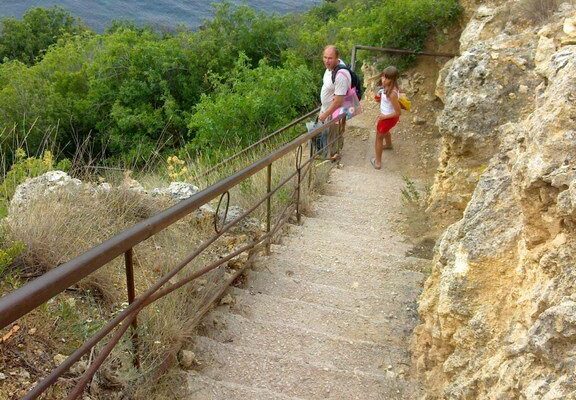Diana’s Grotto on Cape Fiolent
Diana’s Grotto is a picturesque arch in the Lermontov or Fiolent Cape protruding into the sea, located on the southwestern coast of Crimea. Residents of Sevastopol refer to the natural landmark simply as “The Arch”. The chains of the Main Crimean Ridge originate from the shore blown by sea breezes. The narrow rocky cape stretches to the west and is part of the Herakleysky Peninsula. It is a volcanic rock of dark color, at 100 meters protruding into the Black Sea.
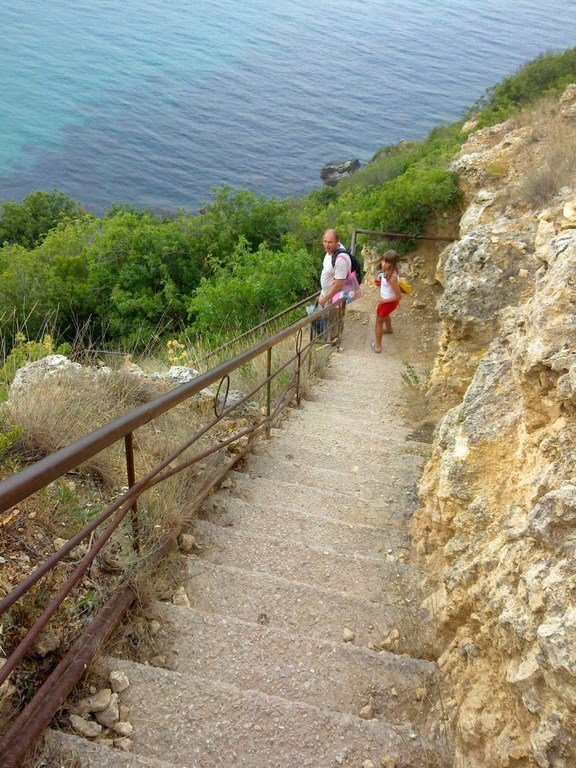
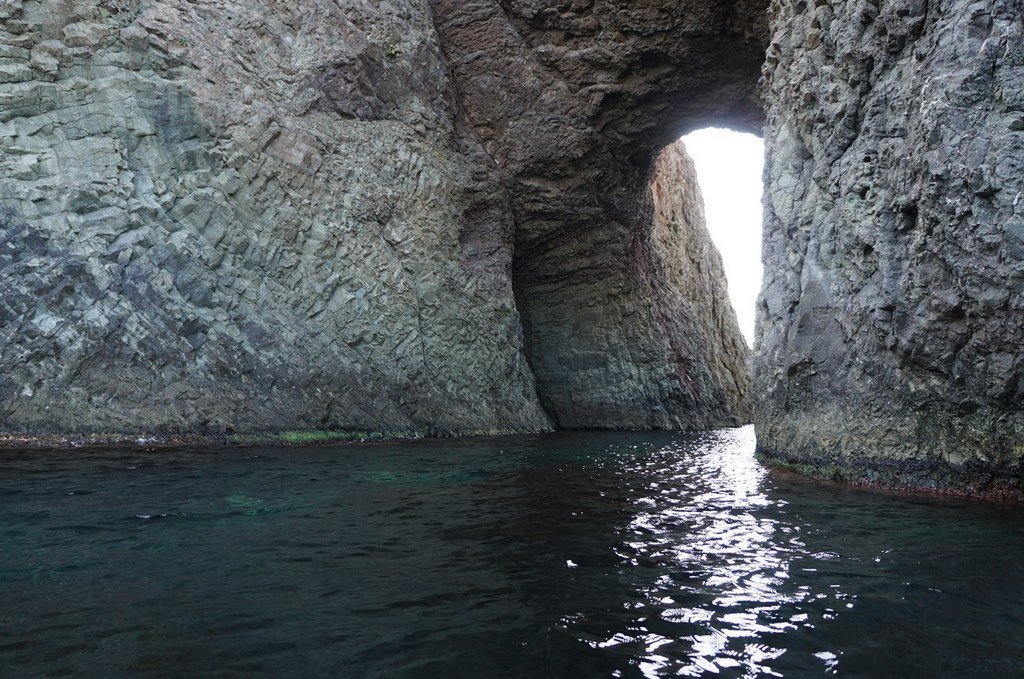
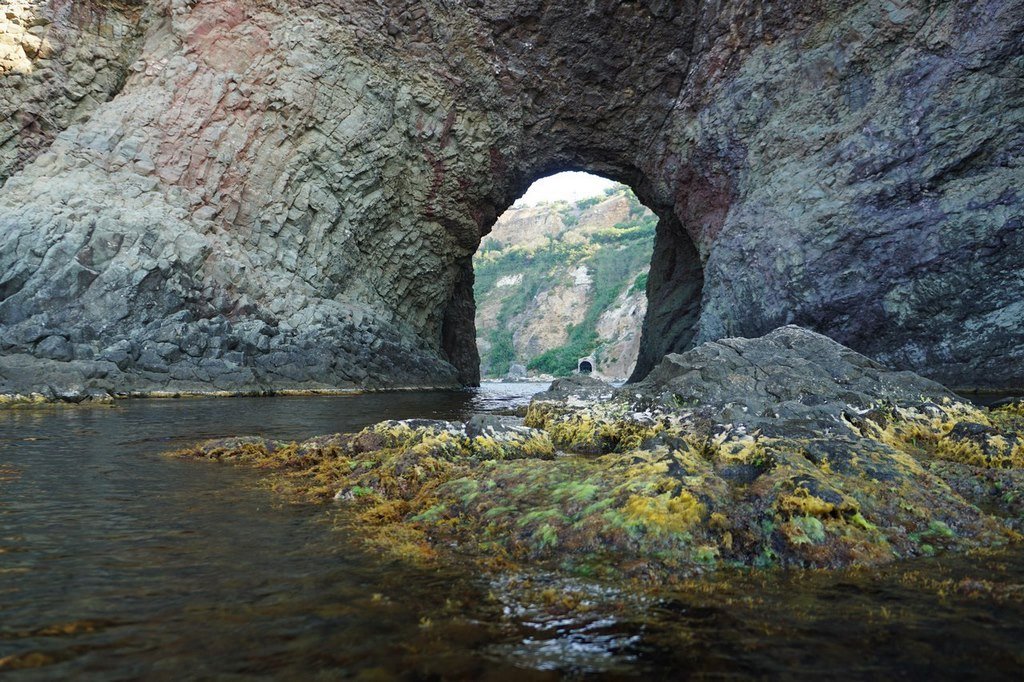
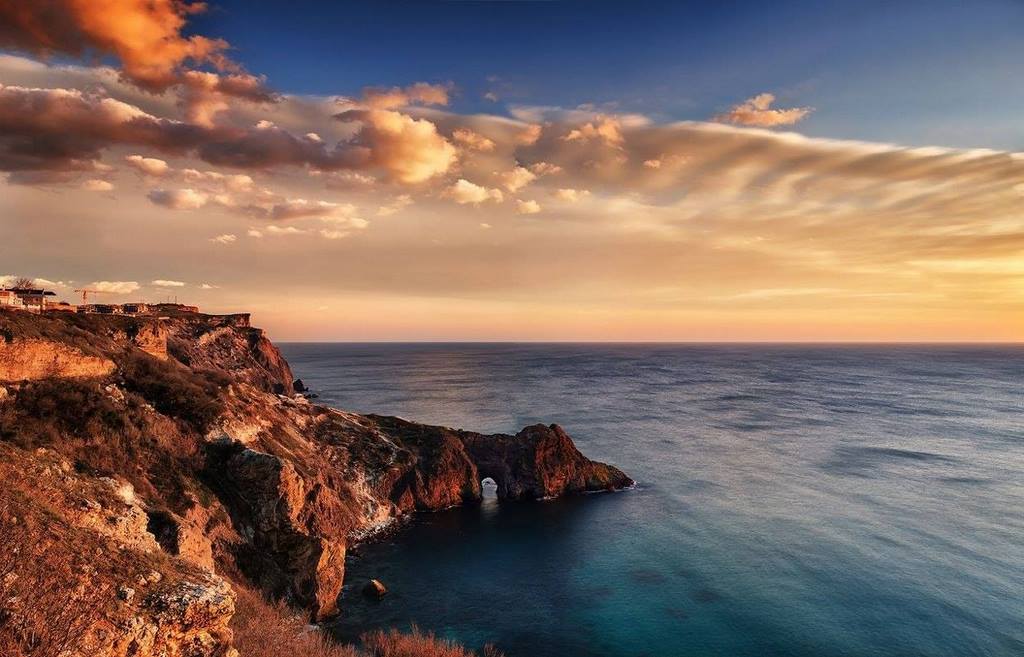
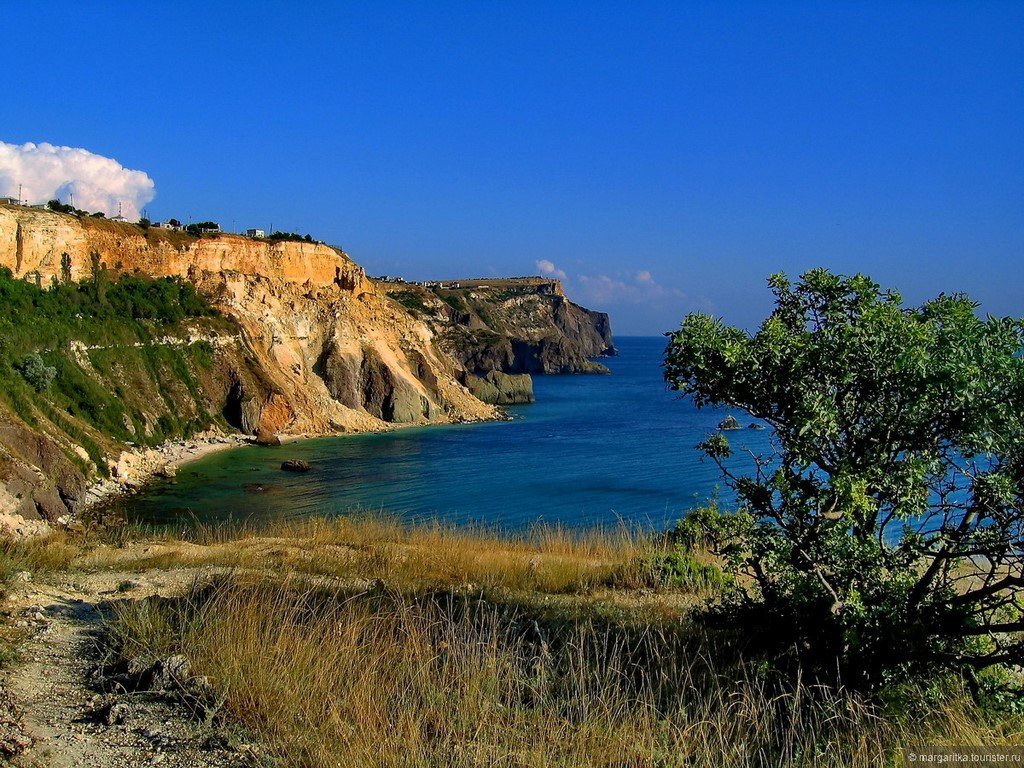
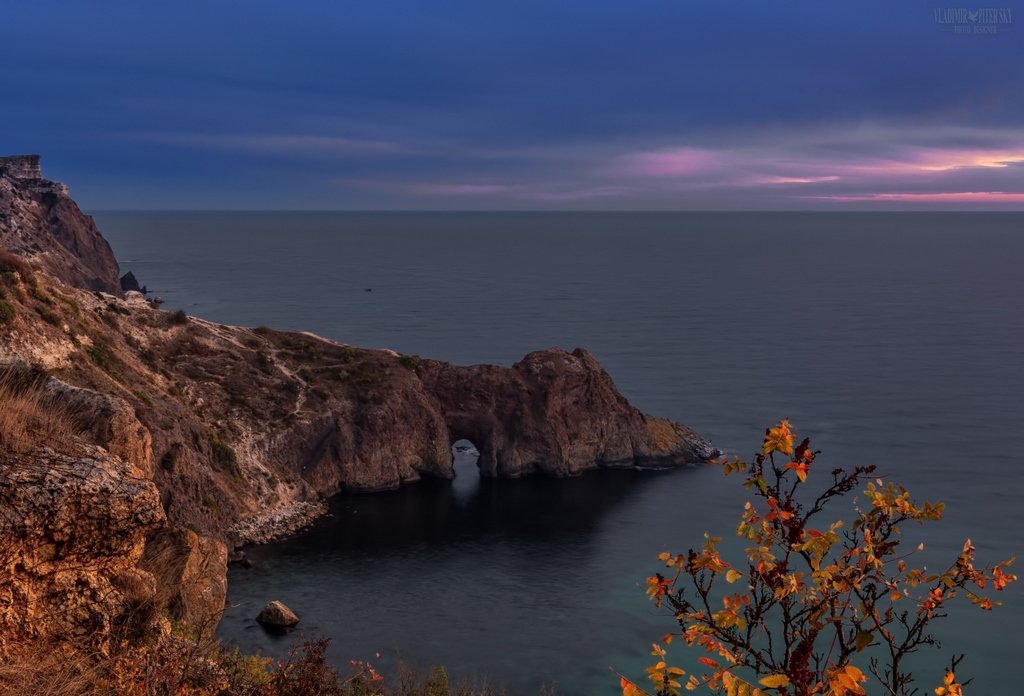
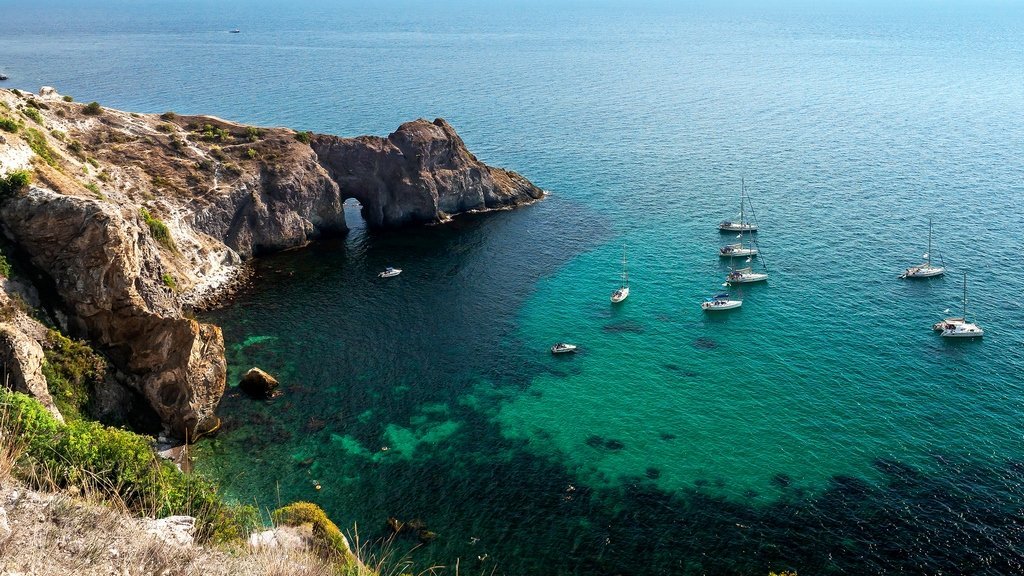
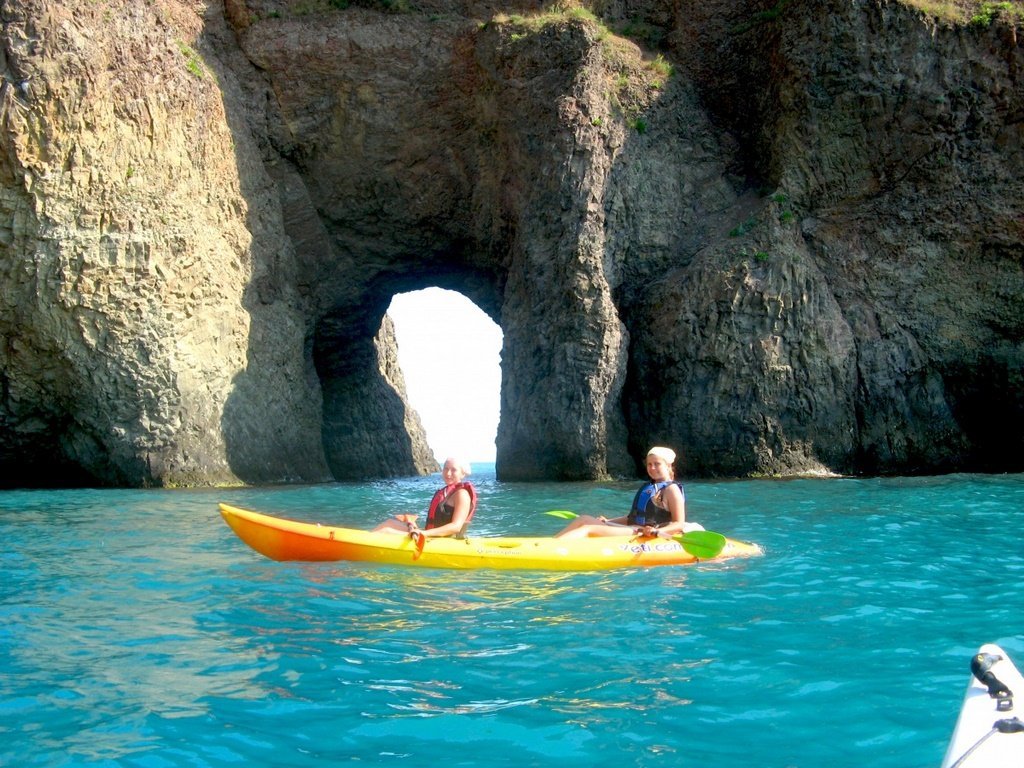
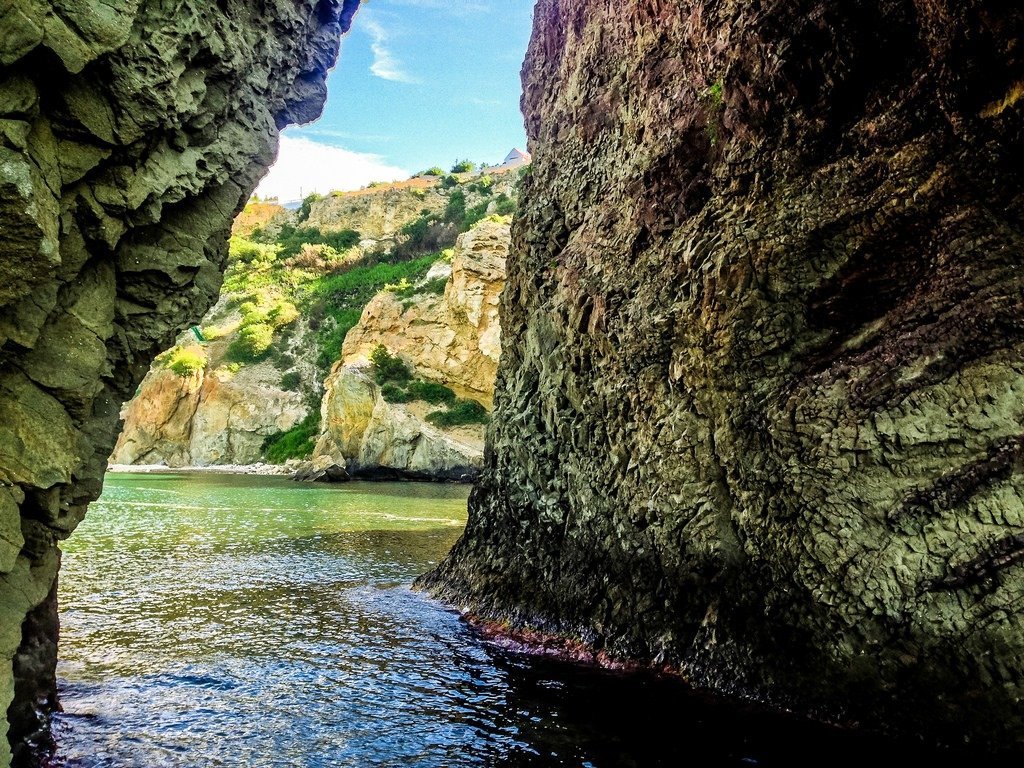
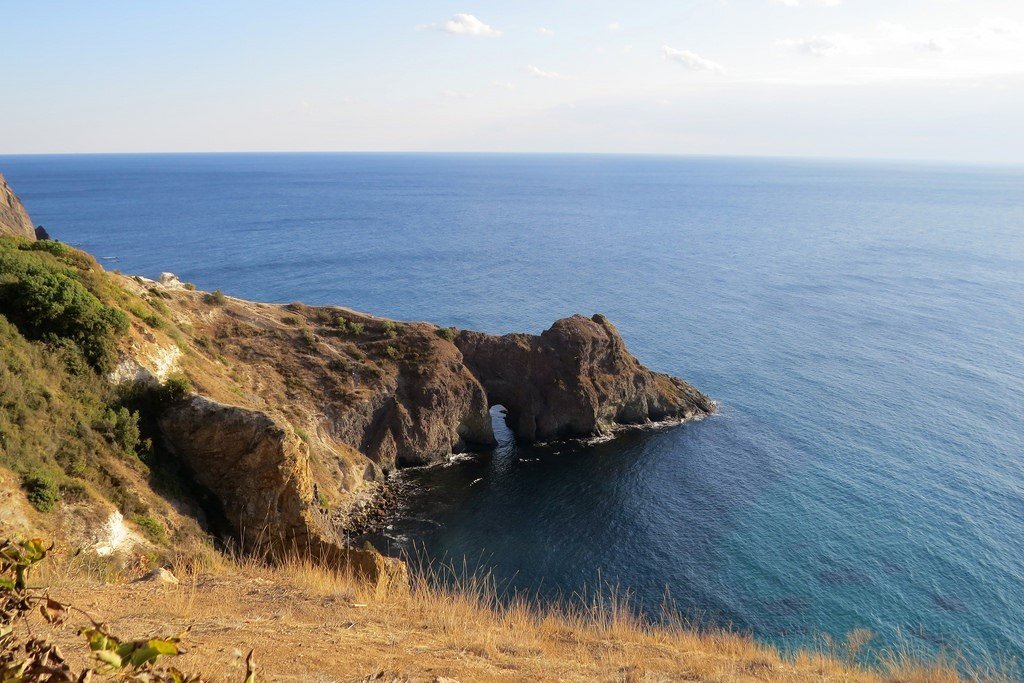
Highlights
About 150-160 million years ago, a large volcano erupted in this part of the coast, the emissions from which formed the solid rock. Over the ensuing time, wind, rainfall and sea surf have badly scarred the coast and resulted in the formation of bizarre pointed cliffs. Not far from Diana’s Grotto, pieces of reddish carnelian, smoky chalcedony and beautiful landscape jasper can be found in the rocks of the promontory.
.The rock arch stretches for 10 meters. Curiously, it has not only an above-water part. Diana’s Grotto continues underwater to a depth of 12-14 meters. Due to the fact that the sun’s rays do not get under the rock arch, the sea water here is slightly colder than near the coast.
.
In the grotto of Diana on Cape Fiolent can freely pass a dinghy. These days kayakers like to paddle through it. At the thin cape you can meet fans of jumping off the rocks, snorkeling and mussel fishing. Near the rocks are the remains of a wrecked minesweeper.
.From the east of Cape Lermontov spread beach “Tsarskoe Selo”, which is also called “Tsarsky”, and from the west – the beach “Caravelle”. It is noteworthy that from “Caravelle” Diana’s grotto can be seen through. Closer to Sevastopol are two more popular beaches – “Briz” and “U Mayak”.
.Origin of the name
The poet M. Y. Lermontov never visited the Crimea, and the cape was named after the small village “Lermontov’s Dacha” located nearby. Diana’s Grotto is named in honor of the ancient Roman goddess of fertility Diana. It is believed that in the southwestern part of Crimea in ancient times there was a cult of Diana, and on the Heraclean Peninsula there was a temple built in honor of the revered goddess.
.What to see around the Grotto of Diana
For more than twenty years, there has been a nature preserve near Diana’s Grotto. On the eastern edge of Cape Fiolent spreads Jasper beach. It has a length of about 0.5 km and is covered with small pebbles. This place of rest is appreciated for its clean water and is considered one of the best on the peninsula. To get to the sea, vacationers descend to the beach on a staircase consisting of 800 steps. In front of the pebble strip in the sea water you can see a large rock with a cross.
.Near the beach, above the cliff is the Balaklava St. George’s Monastery. According to legend, it was founded at the end of the IX century by the Greeks, who were forced to dock at the shore, fleeing a strong storm. At the beginning of the XIX century, the Orthodox monastery was called “fleet”, because the local clergy fed the sailors and officers of the Russian Black Sea Fleet. In 1820 Alexander Sergeyevich Pushkin visited the monastery. In memory of this, a beautiful gazebo-rotunda was placed near the monastery.
.How to get there
Diana’s Grotto is located 15 km from the center of Sevastopol, on the way to Balaklava. In summer, boats from Balaklava pass by Cape Fiolent several times a day.
.
To Diana’s Grotto is not difficult to approach by car. The road from the central part of Sevastopol takes about half an hour. To Cape Fiolent run shuttle buses and cabs. Get on them conveniently at the stops “5th km” or “Square 50th Anniversary of October”, and get off near the “Cooperative Breeze” or “Tsarskoye Selo”.
.